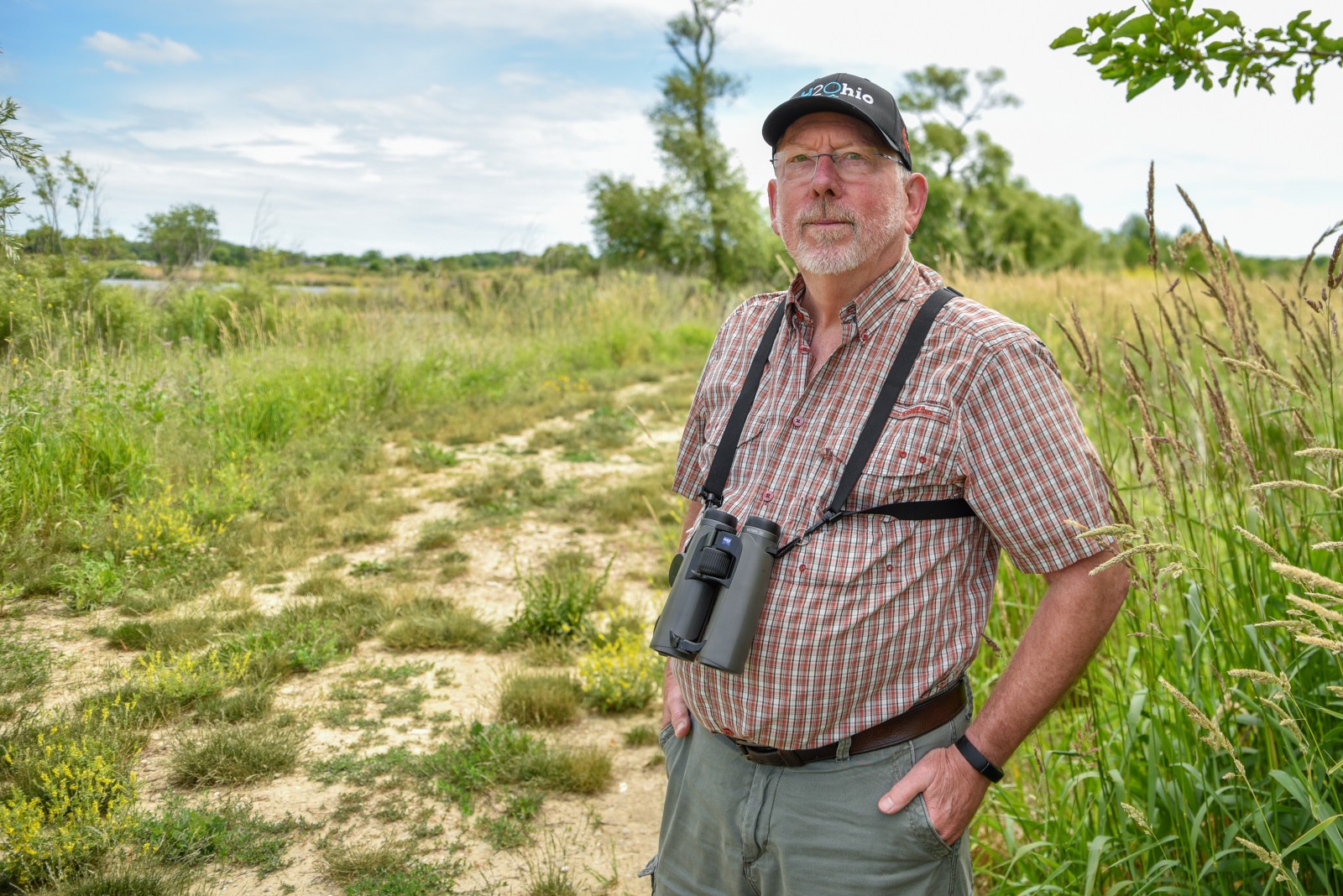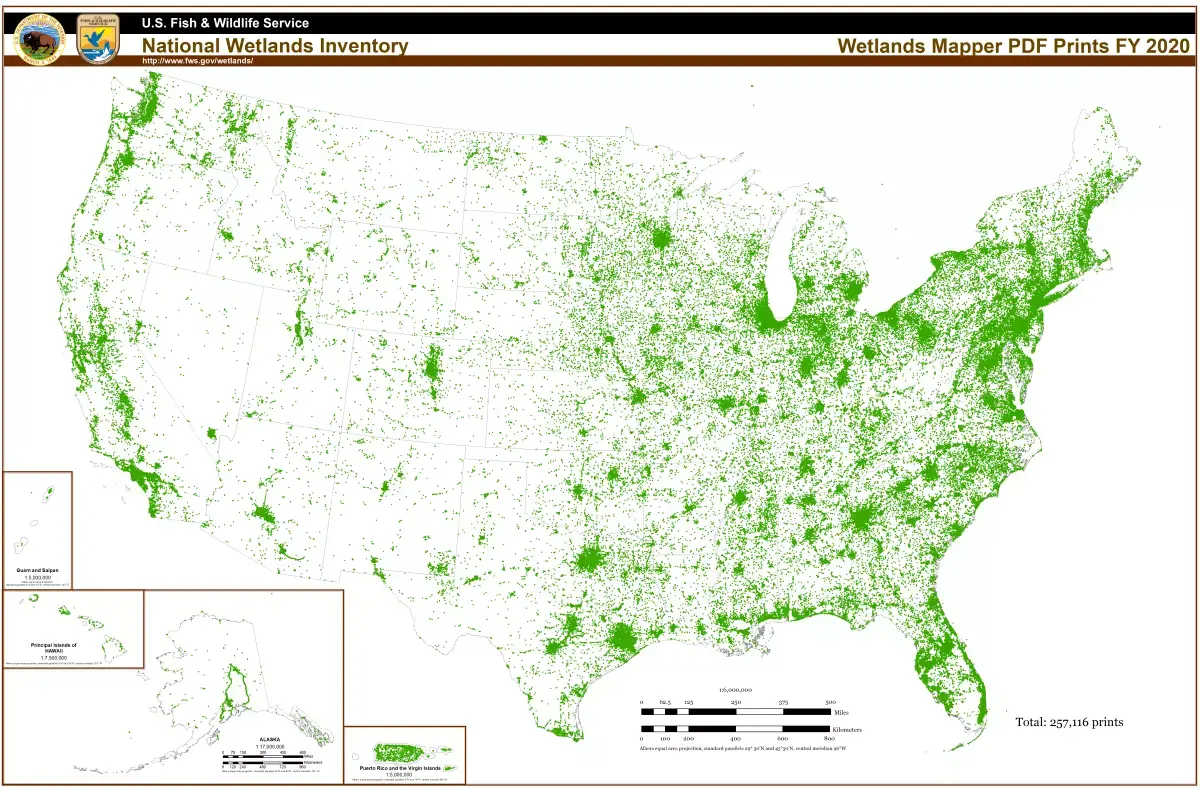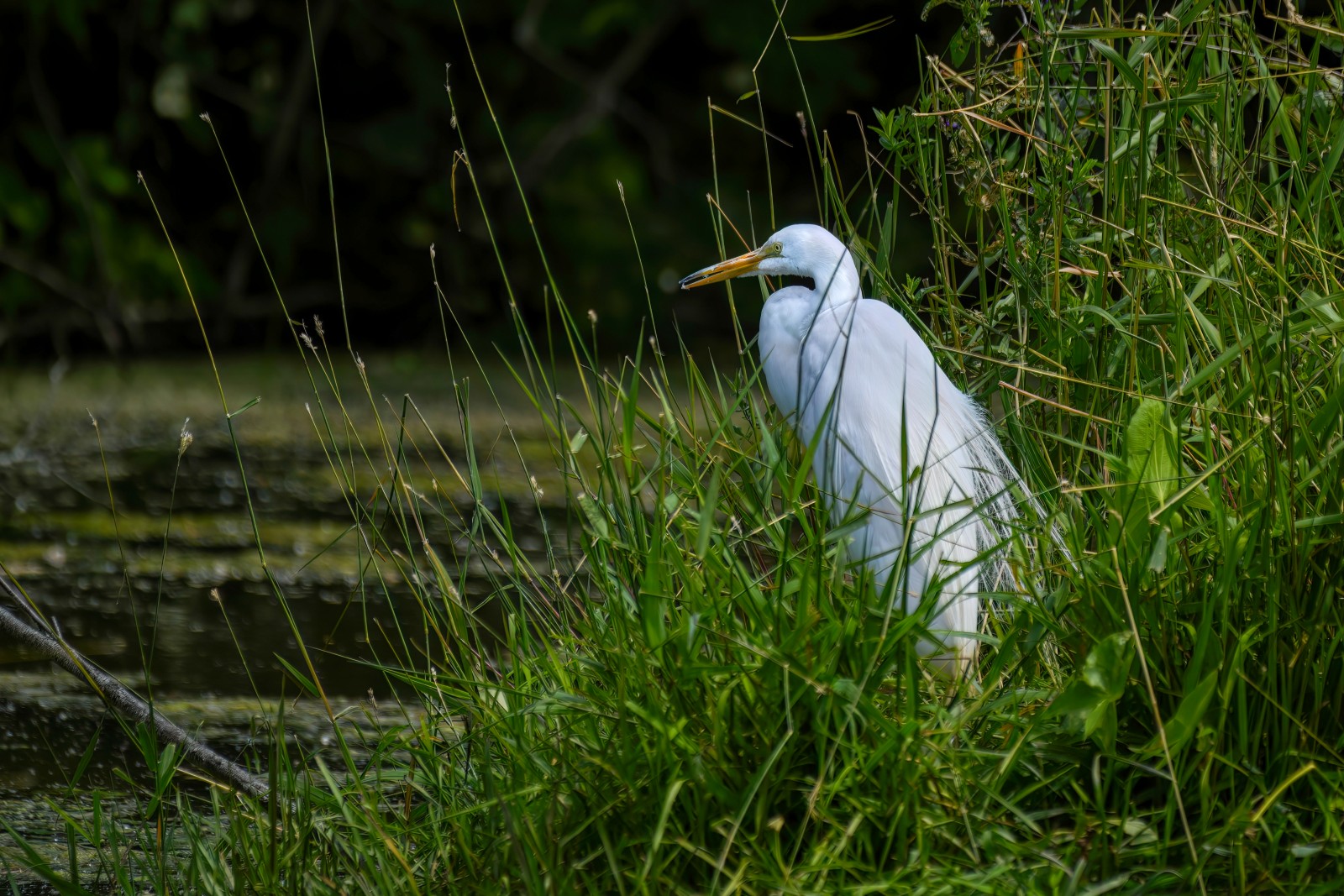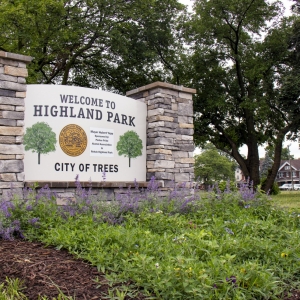A Patchwork of Differing State Laws to Protect Wetlands
Lester Graham, Michigan Radio – June 28, 2023
A recent U.S. Supreme Court decision removed federal protections for many wetlands. The Great Lakes region has some state protections but they vary from state to state. But in a watershed like the Great Lakes basin, wetland protections are only as good as the state with the weakest laws.
The Sackett versus EPA case basically rules that if the wetland is directly connected by surface water to a lake or stream, it’s a federally protected part of what’s called the Waters of the U.S. Otherwise, it’s not protected.
That leaves it to each state to decide whether to and how to protect the wetlands that, for 50 years, were protected by the Clean Water Act.
Environmental groups have repeatedly noted that the Supreme Court did not base its decision on scientific evidence, but instead only on private property rights. Save

Ray Stewart is ambassador for the Ohio Wetlands Association. He stands on a preserve with two wetland areas. Both of them were federally protected, but a Supreme Court ruling removed protections from one of the wetland areas through a decision named Sackett v. EPA. Stewart wants Congress to pass better wetland protection laws. Photo: Lester Graham/Michigan Radio
On a pleasant day in Ohio, Ray Stewart was sitting on a bench at the Great Egret Marsh, a Nature Conservancy preserve next to Lake Erie. He’s the ambassador for the Ohio Wetlands Association. He was showing me a part of the wetland preserve connected to a lake harbor. It is still protected under the Clean Water Act.
“But if we look over our shoulder here, there is another marshy area that is part of this preserve. And it is it is totally isolated by an embankment surrounding it. But because it doesn’t have a surface connection, then it doesn’t fall under the new definition of Waters of the United States with this recent Sackett v. EPA,” he said.
The two wetlands are equally valuable in helping to filter out contaminants and reducing flooding. Like all wetlands, they’re also among the most productive ecosystems for the organisms at the bottom of the food web as well as for fish, waterfowl, and birds of prey such as bald eagles.

A 2020 National Wetland Inventory Map from the U.S. Fish and Wildlife Service. States such as Illinois, Indiana, and Ohio have lost 90 percent of their wetlands due to agriculture and development.
The states, individually, can make laws stronger laws than the federal ones and some of them already have them. But they don’t all have the same level of protections for wetlands. The eight Great Lakes states are a good example.
According to Earth Justice, Minnesota and New York have some of the strongest protections for wetlands in the nation.
Wisconsin, Michigan, Indiana, Ohio, and Pennsylvania have fairly strong protections but they’re all somewhat different.
Michigan in particular will continue protecting wetlands as it has been. It’s had its own program since 1979 and in 1984 the EPA granted the state full authority to continue under state law. That’s rare.
Illinois, again according to Earth Justice, has the weakest wetlands protections in the Great Lakes region.
“A state that’s doing a lot to protect its watershed, if it shares a watershed with another state that is not protecting its watershed, it’s going to likely have negative effects from pollution that’s coming from that other state,” said Jim Murphy, Director of Legal Advocacy at the National Wildlife Federation.
He argued that state protections are not a substitute for uniform federal protections.
He also said states are vulnerable to what’s called the ‘race to the bottom’ to attract economic development.
“When some development goes into the neighboring states, it has weaker protections and starts the narrative of ‘Boy, if we didn’t have these wetlands protections here, we could get that economic activity in our state.’”
Business groups, developers, and farmers are celebrating the Sackett decision.
Brian Turmail is the VP of public affairs for the Associated General Contractors of America. He said the Supreme Court decision cleared up the chaotic way the wetland protections changed from one presidential administration to the next and he added each time it amounted to government overreach.
“The answer isn’t for the executive branch to invent new authorities that Congress didn’t invest in them. The answer is, is for communities, for activists, for anyone who’s interested about particular wetlands, to work with state and local officials to put in place any additional protections they feel are needed on waters that aren’t federal Waters of the U.S.”
The American Farm Bureau Federation did not respond to requests for a comment. In this release, it indicates the Farm Bureau is pleased with the Supreme Court decision.

A great egret looking for its next meal. Wetlands are the beginning of life for fish, waterfowl, and many birds of prey such as the bald eagle and ospreys.Lester Graham/Michigan Radio
Back at the Great Egret Marsh, Ray Stewart said, to his mind, Congress needs to amend the Clean Water Act to make it clear that the wetlands near but separate from the Waters of the U.S. are still protected.
“There needs to be a watershed-wide -as a minimum- management of these systems, which is why it’s so important to have a federal program that can look at a broader, more comprehensive view.”
The patchwork of state protections of wetlands is problematic because water doesn’t care about political boundaries. Even wetlands that are not directly connected by surface water with lakes, rivers, and streams, are often connected through groundwater or during floods. Those wetlands are also a buffer that can reduce flooding during the increasingly frequent intense rainstorms that are happening because of climate disruption. If those isolated wetlands near a lake or river are gone, flooding could be worse. And the effects on wildlife are incalculable.
Without protections, more of the small fraction of what’s left of wetlands in the nation could be damaged or destroyed with consequences that reach beyond state borders.
This story is part of a Great Lakes News Collaborative series investigating the region’s water pollution challenges. Called Refresh, the series explores the Clean Water Act’s shortcomings in the Great Lakes, and how the region can more completely address water pollution in the next 50 years.
The collaborative’s four newsrooms — Bridge Michigan, Circle of Blue, Great Lakes Now and Michigan Radio — are funded by the Charles Stewart Mott Foundation.
Related
© 2023 Circle of Blue – all rights reserved
Terms of Service | Privacy Policy



